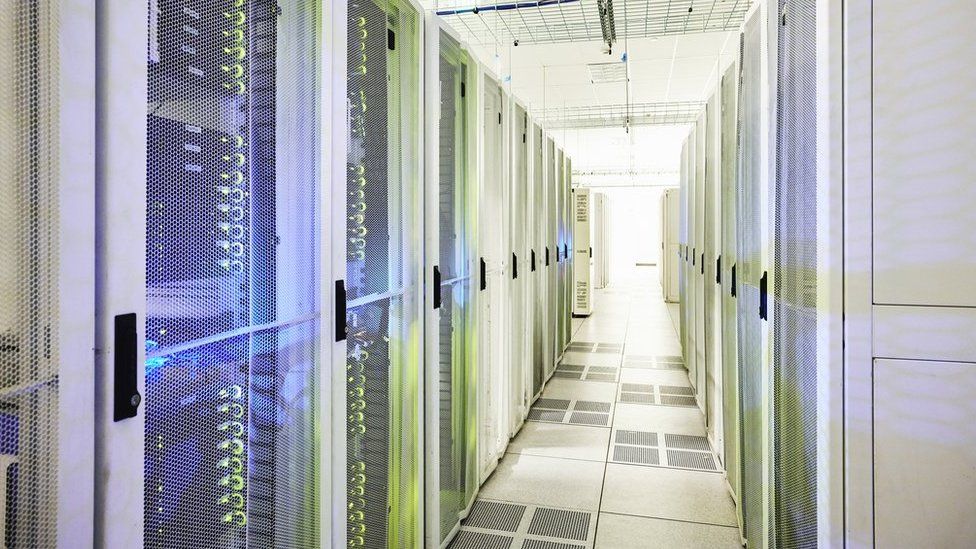ARTICLE AD BOX
 Image source, Getty Images
Image source, Getty Images
The boom in artificial intelligence (AI) and quantum computing will drive a spike in energy use, the National Grid has predicted.
Both rely on data centres - warehouses full of computer systems.
Chief executive John Pettigrew said the power those data centres use would increase six-fold in the next decade.
He said the grid was becoming "constrained" and "bold action" was needed to create a network able to cope with "dramatically" growing demand.
"Future growth in foundational technologies like artificial intelligence and quantum computing will mean larger scale, energy-intensive computing infrastructure," Mr Pettigrew said.
The National Grid boss said in a speech on Tuesday, shared on LinkedIn, that now was "a pivotal moment" for grid transformation - with rising demand for energy-hungry technologies and more people opting for heat pumps or electric cars.
"Today, just like in the 1950s, we find ourselves with a network that's constrained," he said.
"Demand on the grid is growing dramatically, and forecast to double by 2050 as heat, transport and industry continue to electrify."
The high-voltage transmission network of cables and pylons that make up the UK's "supergrid" is now more than 70 years old.
To achieve net zero emissions by 2050 in line with global targets, grid operators are under pressure to deliver upgrades to current infrastructure that can meet higher consumer demand for electricity in future and do so sustainably by connecting to renewable energy sources.
We are at "a moment in time that requires innovative thinking and bold actions to create a transmission network for tomorrow's future," Mr Pettigrew said.
Power hungry
Most observers agree that whatever that future looks like, data centres will be a part of it.
They have become integral to our modern lives and technologies, operating as a physical home to our digital information stored in the so-called "cloud" and other forms of IT equipment that power services and platforms.
But all that computing power comes at an environmental cost. Some studies have warned that the AI industry alone could consume as much energy as a country the size of the Netherlands by 2027.
The sector has been enjoying an economic boom after the launch of chatbots like OpenAI's ChatGPT and image-making tools such as Midjourney.
Concern over their energy use and demands on infrastructure has increased in recent years.
Official data showed that in the Republic of Ireland, which is home to the European headquarters of several big tech firms such as Google and Facebook-parent Meta, data centres accounted for nearly a fifth of all electricity used in 2022.
The amount of electricity being used by data centres in the country has risen by 400% since 2015 and ignited debate about capacity.
Meanwhile, quantum computers, which process data differently to regular computers and can complete complex calculations very quickly, are still mostly being used experimentally to see what they can do.
But it is hoped in future they could secure scientific breakthroughs and advance secure methods of communication.

 1 year ago
80
1 year ago
80








 English (US) ·
English (US) ·